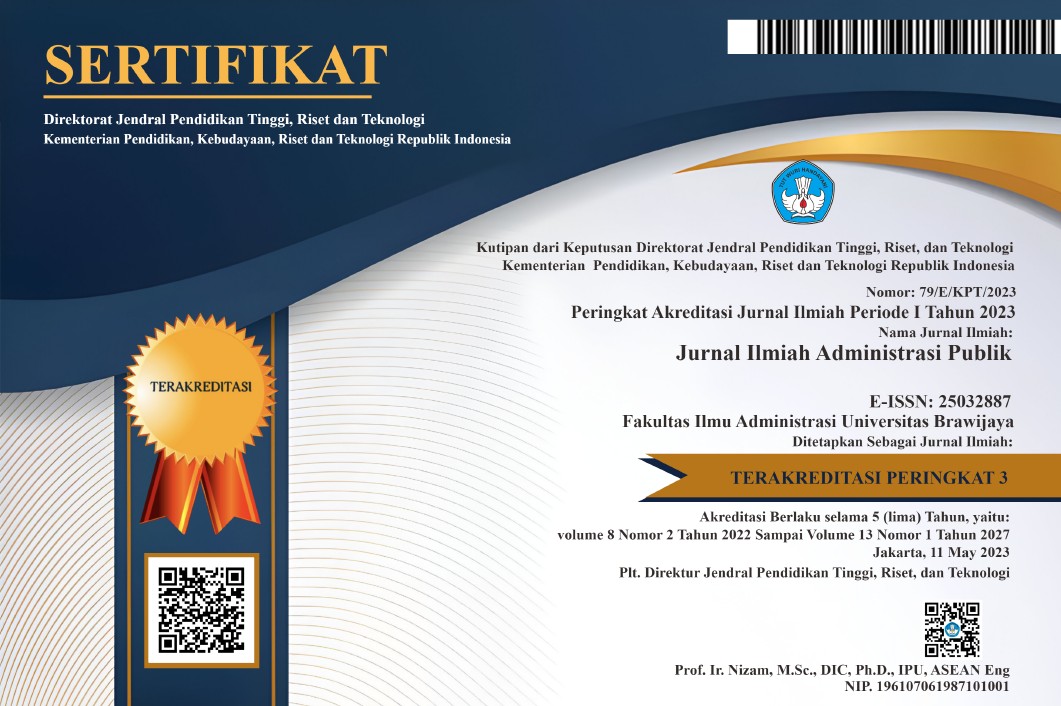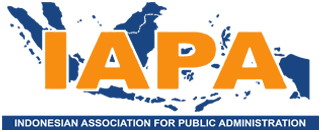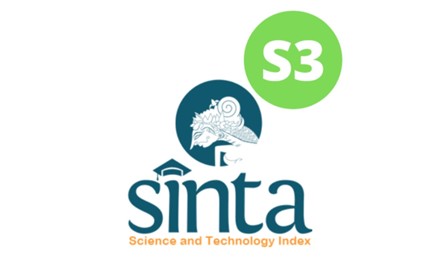Key Success Factor Tata Kelola Kota Tangguh Bencana
DOI:
https://doi.org/10.21776/ub.jiap.2020.006.01.10Keywords:
key success factor, disaster resilience, urban resilienceAbstract
This paper examines the critical factors of governance for disaster resilient cities in the world through a literature study. Cities have experienced a culmination point where urban carrying capacity has weakened to ensure the resilience of urban communities. The weakening of the city's carrying capacity is due to natural factors such as climate change and artificial factors, such as inadequate land management and infrastructure. Referring to the urgency of city resilience to ensure community resilience to disasters, cities in various parts of the world have tried to increase resilience from various sides, including institutional resilience, economic resilience, social resilience, infrastructure resilience, and resilience.References
ADB. 2006. Urbanization and Sustainability in Asia: Case studies of good practice. Accessed on 25 April 2015 at http://adb.org/sites/default/files/pub/2006/urbanizationsustainability.Pdf
Adhikari, P.; Hong, Y.; Douglas, K.R.; Kirschbaum, D.B.; Gourley, J.; Adler, R.; Robert Brakenridge, G. 2010. A digitized global flood inventory (1998–2008): Compilation and preliminary results. Nat. Hazards, 55, 405–422
Archer, Diane. (2012). Baan Mankong participatory slum upgrading in Bangkok, Thailand: Community perceptions of out comes and security of tenure. Habitat International, 36(1), 178-184. DOI: 10.1016/j.habitatint.2011.08.006
Bosher, L., dll. (2007). Resource Accessibility and Vulnerability in Andhra Pradesh: Caste and Non-caste Influences. Development and Change, 38(4), 615–640.
Bradshaw, S., dan Fordham, M. (2013). Women, Girls and Disasters. A Review for DFID. DFID. https://www.gov.uk/government/uploads/system/uploads/attachment_data/file/236656/women-girlsdisasters.pdf
Broekx, S.; Smets, S.; Liekens, I.; Bulckaen, D.; de Nocker, L. (2011). Designing a long-term flood risk management plan for the Scheldt estuary using a risk-based approach. Nat. Hazards, 57, 245–266.
Bruneau, M., dkk. (2003). A framework to quantitatively assess and enhance the seismic resilience of communities. Earthquake Spectra, 19(4): 733–752.
CY Gov. (2005). Annual Report and Official Handbook 2004-2005. Tersedia pada http://www.gov.ky/portal/pls/portal/docs/1/2247259.PDF [Diakes pada 25 Januari 2020].
Danar, O.R., & Pushpalal, D. (2014). Building community resilience: Conceptual framework and its application in post tsunami resettlement. Procedia Economics and Finance, 18, 489–496. doi: 10.1016/S2212-5671(14)00967-8
Danar, Oscar R. (2020). Disaster Governance. Yogyakarta: Diva Press.
DIBI BNPB. (2020). Bencana Alam di Indonesia 1815 –2020.Tersedia padahttp://bnpb.cloud/dibi/grafik1a [Diakses pada 20 Januari 2020]
Eissa, A.E.; Zaki, M.M. 2011. The impact of global climatic changes on the aquatic environment. Procedia Environtmental Science, 4, 251–259.
Ganapati, N. E. (2012). In Good Company: Why Social Capital Matters for Women during Disaster Recovery. Public Administration Review, 72(3), 419-427. http://onlinelibrary.wiley.com/doi/10.1111/j.1540-6210.2011.02526.x/abstract
Ganapati, N. E. (2013). Downsides of Social Capital for Women During Disaster Recovery: Toward a More Critical Approach. Politics and Society, 41(1), 72–96. http://aas.sagepub.com/content/45/1/72
Garcia, E.; Loáiciga, H. 2014. Sea-level rise and flooding in coastal riverine flood plains. Hydrol. Sci. J., 37–41.
GFDRR. (2010). Natural Hazards, UnNatural Disasters. The Economics of Effective Prevention. United Nations, World Bank. https://www.gfdrr.org/node/281
GSDRC. (2014). Disaster Resilience. Tersedia pada http://www.gsdrc.org/docs/open/gsdrc_dr_topic_guide.pdf [Diakses pada 2 Januari 2020].
Güneralp, B.; Güneralp, I.; Liu, Y. 2015. Changing global patterns of urban exposure to flood and drought hazards. Glob. Environ. Chang. 2015, 31, 217–225.
Hughes, K., Fuller, R., & Bushell, H. (2013). A Multidimensional Approach to Measuring Resilience. Discussion Paper, Oxfam GB. Tersedia padahttp://oxfamilibrary.openrepository.com/oxfam/handle/10546/302641 [Diakses pada 24 Januari 2020].
ICLEI. 2010. How to make cities more resilient: a handbook for local government leaders. Accessed on 25 April 2015 at http://www.unisdr.org/files/26462_handbookfinalonlineversion. Pdf
IFA. (2006). Institutional Capacity in Natural Disaster Risk Reduction: A Comparative Analysis of Institutions, National Policies, and Cooperative Responses to Floods in Asia (Final report for APN project 2005-01-CMY-Nikitina). Tersedia pada https://www.apn-gcr.org/resources/files/original/a4adb6376d59bf80f80999396843c8d8.pdf
[Diakses pada 17 Januari 2020].
IFRC. 2019. Indonesia: 2019 Country Program Overview. http:/www.ifrc.org/
IPCC. (2014). Glossary. Tersedia pada https://www.ipcc.ch/site/assets/uploads/2018/02/AR5_SYR_FINAL_Annexes.pdf [Diakses pada 3 Januari 2020].
Jha, A.K., et al. (eds.) (2013). Building Urban Resilience: Principles, Tools, and Practice. World Bank. https://www.gfdrr.org/node/1948
Lebel, Louis dkk. (2006). Assessing institutionalised capacities and practices to reduce the risk of flood disasters. In J. Birkmann (Ed). Measuring Vulnerability to Hazards of Natural Origin. Towards Disaster Resilient Societies(pp.1-15). Tokyo: UNU Press.
Mahmud, T., & Prowse, M. (2012). Corruption in cyclone preparedness and relief efforts in coastal Bangladesh: Lessons for climate adaptation? Global Environmental Change, 22(4), 933–943. http://www.sciencedirect.com/science/article/pii/S0959378012000799
OCHA (2012). OCHA Gender Toolkit 7. Gender and Resilience. OCHA. http://ochanet.unocha.org/p/Documents/GenderToolkit1_7_GenderandResilience.pdf
Oliver-Smith, A., et al. (2012). Addressing loss and damage in the context of social vulnerability and resilience. Policy Brief No. 7. UN University. http://www.ehs.unu.edu/article/read/press-release-addressing-loss-anddamage-in-the-context
Oxfam (2013). No accident. Resilience and the inequality of risk. Oxfam International. http://www.oxfam.org/sites/www.oxfam.org/files/bp172-no-accident-resilience-inequality-of-risk-210513- en_1.pdf http://onlinelibrary.wiley.com/doi/10.1111/j.1467-7660.2007.00426.x/abstract
Park, Kiyong and Lee, Man Hyung. 2019. The Development and Application of the Urban Flood Risk Assessment Model for Reflecting upon Urban Planning Elements
Peek, L., et al. (2010). Children with Disabilities in the Context of Disaster: A Social Vulnerability Perspective. Child Development, 81(4), 1260–1270. http://onlinelibrary.wiley.com/doi/10.1111/j.1467-8624.2010.01466.x /abstract
Reaching Resilience (n.d.). Handbook resilience 2.0 for aid practitioners and policymakers in Disaster Risk Reduction, Climate Change Adaptation and Poverty Reduction. Brussels: Uni Eropa.
Shepherd, A., et al. (2013). The Geography of Poverty, Disasters and Climate Extremes in 2030. ODI. http://www.odi.org.uk/sites/odi.org.uk/files/odi-assets/publications-opinion-files/8633.pdf
Turnbull, M.,dll. (2013). Toward Resilience: A Guide to Disaster Risk Reduction and Climate Change Adaptation. Catholic Relief Services. http://reliefweb.int/sites/reliefweb.int/files/resources/ECB-toward-resilienceDisaster-risk-reduction-Climate-Change-Adaptation-guide-english.pdf
Twigg, John. (2009). Characteristics of a Disaster-Resilient Community: A Guidance Note. Tersedia pada http://community.eldis.org/.59e907ee/Characteristics2EDITION.pdf [Diakses pada 5 Januari 2020].
UNESCAP 2013. Urbanization trends in Asia and Pacific. Available online at http://www.unescapsdd.org/files/ documents/SPPS-Factsheet-urbanization-v5.pdf
UNISDR (2008). Linking disaster risk reduction and poverty reduction: good practices and lessons learned. UNISDR. http://www.unisdr.org/we/inform/publications/3293
UNISDR. 2010. What is disaster risk reduction. Accessed online at http://www.unisdr.org/who-we-are/what-is-drr
UNISDR.2011. Resilience definition. Available online at http://www.unisdr.org/we/inform/terminology
Wilkinson, E. (2012a). Transforming disaster risk management: a political economy approach. ODI. http://www.odi.org.uk/publications/6095-disaster-risk-management-political-economy-climate-change Wilkinson, E. (2012b). Why ‘small is beautiful’ in municipal disaster risk reduction: Evidence from the Yucatán peninsula, Mexico. Environmental Hazards, 11(2). http://www.tandfonline.com/loi/toc/tenh20/11/2
World Bank . 2013. Building urban resilience: principle, tools and practice. Accessed on 25 April 2015 at http://www-wds. worldbank.org/external/default/WDSContentServer/IW3P/IB/2013/03/08/000356161_20130308155433/Rendered/PDF/758450PUB0EPI0001300PUBDAT UNESCAPE02028013.pdf
Young, Simon R. (2004). Impact of Hurricane Ivan in Grand Cayman. Tersedia pada https://stormcarib.com/reports/2004/SRYCAYMAN.PDF [Diakses pada 12 Januari 2020].
Downloads
Published
Issue
Section
License
If your paper is accepted, the author identified as the formal corresponding author for the paper will receive an email prompting them to login into Author Services; where via the JIAP Author Licensing Service they will be able to complete the license agreement on behalf of all authors on the paper.














